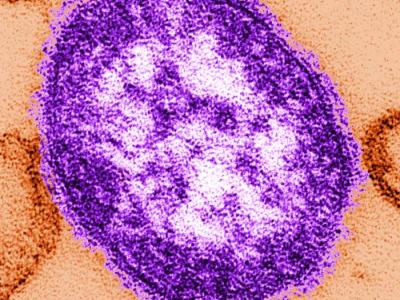South Korea reports first MERS case in 5 days
South Korea today reported its first confirmed MERS-CoV case in 5 days, in a nurse who works at Samsung Medical Center, the hardest-hit facility in the country's large healthcare-linked outbreak. The latest illness raises the total to 183.
The health ministry said the 24-year-old nurse helped take care of seven MERS-CoV (Middle East respiratory syndrome coronavirus) patients and had her first symptoms on Jun 30, the Korea Times reported today. It added that another nurse from Samsung was positive for the virus on initial tests, with confirmatory testing underway.
So far 13 healthcare workers at Samsung Medical Center have contracted MERS-CoV, according to the Times report.
In other developments, the World Health Organization (WHO) yesterday posted a briefing on South Korea's outbreak that focused on the country's contact tracing. It said about 2,400 people were still being monitored, all but about 700 of them in their homes. It said that about 13,500 contacts have completed their 14-day monitoring period.
Contact tracing can be challenging on many fronts, because of reliance on patients' memories and because the level of detail needed to accurately trace all contacts means it is possible to miss some.
The WHO said beefed-up procedures in South Korea are helping to better identify contacts, especially at the early stage of disease when MERS-CoV isn't usually suspected. For example, officials are calling people in quarantine twice a day, and healthcare workers are being trained on how to better identify and manage the disease.
Though cases have declined significantly, continued sporadic cases show that the risk of transmission hasn't reached zero, the agency said.
Jul 2 Korea Times story
Jul 1 WHO brief
MERS sickens two more in Saudi Arabia
Saudi Arabia's Ministry of Health (MOH) today announced two new MERS-CoV cases, including one in Riyadh, the city's fourth in the last 5 days.
Riyadh's new case involves a 76-year-old Saudi man who is not a health worker and is hospitalized in critical condition. So far investigators have found no links to suspected or confirmed MERS-CoV cases in community or hospital settings.
The other patient is a 60-year-old man from Dammam, in the east-central part of the country. The MOH said he is not a healthcare worker and is in stable condition. He had no known contact with a suspected or confirmed MERS-CoV case.
Clusters of household and healthcare-linked cases have been reported from the city of Hofuf over the past several weeks, but no new illnesses have been reported from that area in the past 7 days.
The new cases lift Saudi Arabia's MERS total to 1,044 cases, which include 460 deaths. So far 578 people have recovered from their infections, and 6 are still being treated.
Jul 2 MOH update
Fatal H5N1 case reported in Egypt
Egypt's government has reported another H5N1 avian influenza infection, in a patient from Aswan governorate who died from his or her infection.
The case was included in new database listings from the United Nations Food and Agriculture Organization (FAO) that were picked up by FluTrackers, an infectious disease news message board. The FAO listings are based on reports from national authorities.
No other details were available for the patient, other than that the illness was detected in or near the Aswan city of Adfu and that the observation date was Jun 16.
Egypt had an unprecedented surge of human H5N1 infections earlier this year, and though few details are known about the current status of the outbreak, official reports of sporadic cases continue to trickle in.
The new case raises Egypt's H5N1 total so far this year to 147, according to a regularly updated list maintained by FluTrackers.
Jul 2 FluTrackers thread
FluTrackers H5N1 in Egypt case list
CDC, US military report results of Ebola monitoring
US states, territories, and local health departments had the capacity to successfully monitor for Ebola and tracked 10,344 people between Nov 3, 2014, and Mar 8, 2015, after federal guidance was released in October, with no Ebola transmission reported during that period, according to a report from the US Centers for Disease Control and Prevention (CDC) today.
The CDC released guidance on monitoring and movement for people potentially exposed to Ebola on Oct 27, and within 7 days all 50 states and two local jurisdictions had implemented them. The guidance focused on 21-day active monitoring for low-risk travelers and direct active monitoring for those with some or high risk and for healthcare workers at low risk who had cared for patients in the United States.
A CDC team published the monitoring program results, based on daily and weekly reports from health departments, in the Jul 3 issue of Morbidity and Mortality Weekly Report (MMWR).
In total, 60 jurisdictions conducted monitoring: 50 states, New York City, the District of Columbia, five US territories, and three freely-associated states. Until Mar 9 they submitted daily reports to the CDC for everyone who had some or high risk, with weekly reports for those at low risk.
Monitoring was more than 99% complete. Of people in the low risk-group who reported symptoms, 39 were tested for Ebola, and none were positive. None of the people in the higher-risk groups reported symptoms. More than half of those monitored were in five jurisdictions: New York City, Maryland, Pennsylvania, Georgia, and Virginia.
The team concluded that the findings demonstrate the capacity of US health departments for conducting large-scale monitoring.
In a related report in MMWR today, a US military team reported on the results of monitoring in troops who were deployed to Liberia to assist with Ebola control efforts. Of about 2,500 deployed personnel, 32 had a febrile illness, including 5 who weren't aware of their fevers. None of those who had fevers had contact with Ebola patients, and no documented Ebola exposures or infections occurred in US military members while in Liberia or the United States.
Jul 3 MMWR report on US Ebola monitoring
Jul 3 MMWR report on US military Ebola monitoring










